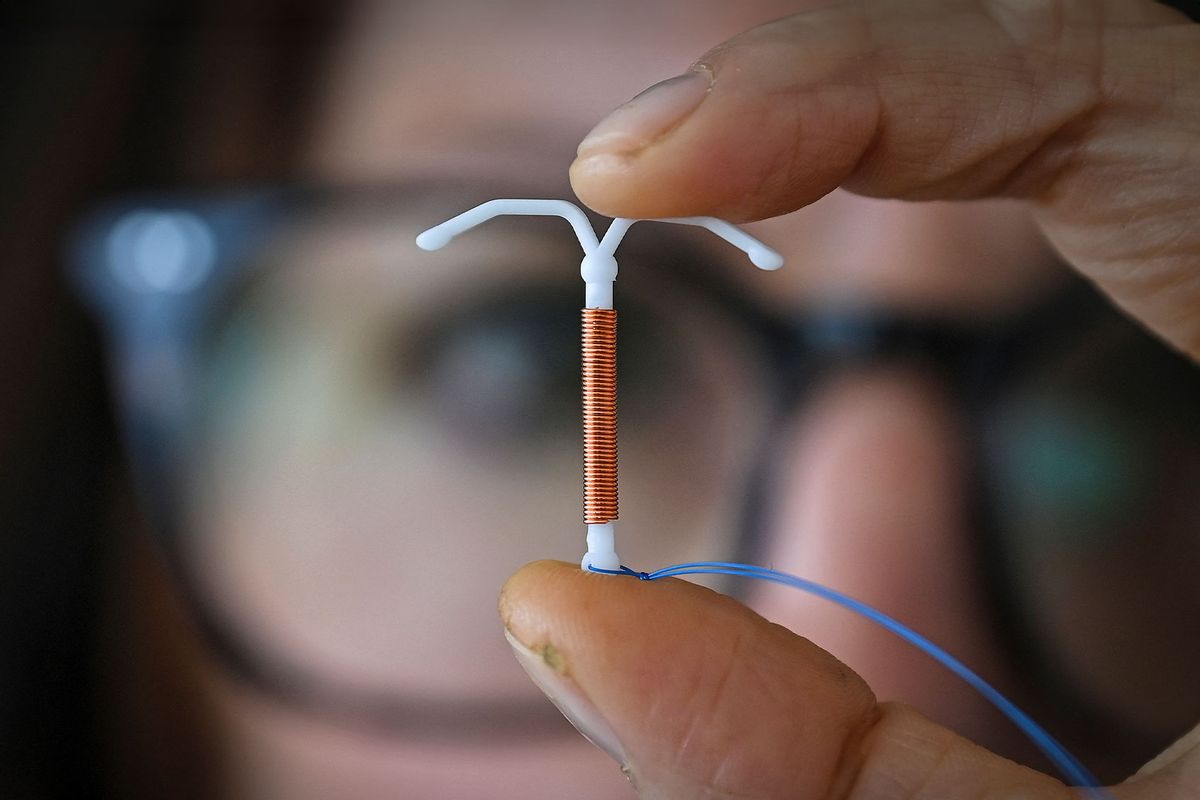America's health care system is inherently sexist, especially when it comes to pain. Research has shown that female patients are consistently prescribed less pain-relieving medication than male patients. Female patients who have chronic pain conditions are also more likely to be misdiagnosed with mental health conditions.
When women started to speak out on TikTok, documenting their real-life experiences of getting an intrauterine device (IUD) inserted, so many felt it validated their pain. In some of the videos posted on TikTok, women describe the pain as “horrible” and “awful.” Another said she was told she’d feel a “pinch,” a common description of the process, but instead what she received was “trauma,” as she was crying during the insertion.
Researchers at Duke University analyzed the top 100 TikTok videos with the hashtag #IUD and found that when users shared details of their experiences, most of them focused on the pain. The pain has been validated is some scientific research, too. A 2014 study of 109 IUD recipients found that 78 percent of the study’s participants reported pain ranging from moderate to severe upon insertion. The following year, a study found that doctors tend to underestimate the pain patients experience during the procedure.
Last week, the Centers for Disease Control and Prevention (CDC) issued recommendations for clinicians on how to help manage the pain that women might experience. According to the guidelines, the topical anesthetic lidocaine “might be useful for reducing patient pain” when injected as a local anesthetic or applied topically as a numbing gel, cream or spray. The issuance is not only seen as a win for reproductive health — as fear and anxiety of pain has been a barrier for some women to get IUDs in the first place — but also as a moment when public health finally took women’s experiences seriously.
"Barriers to IUD use include patient concerns about anticipated pain with placement and provider concerns about ease of placement."
“Pain with UD insertion has not traditionally been addressed as its own separate, important talking point with patients,” Dr. Eve Espey, chair of ACOG’s Contraceptive Equity Expert Work Group, told Salon. “The concerns expressed through social media have helped us understand the importance of having that conversation.”
Notably, in the guidance, the CDC suggests that healthcare providers use the new directives to support “person-centered contraceptive counseling” and “remove unnecessary medical barriers to accessing and using contraception.”
“Barriers to IUD use include patient concerns about anticipated pain with placement and provider concerns about ease of placement,” the CDC states. “When considering patient pain, it is important to recognize that the experience of pain is individualized and might be influenced by previous experiences including trauma and mental health conditions, such as depression or anxiety.”
Want more health and science stories in your inbox? Subscribe to Salon's weekly newsletter Lab Notes.
When asked if the public commentary via media and social media influenced the CDC to issue this new guidance, Antoinette Nguyen, MD, a medical officer in CDC's Division of Reproductive Health, told Salon via email “no.”
“CDC revises its contraceptive guidance periodically after review of the scientific evidence and gathering input from national experts,” Nguyen said. “CDC first published guidance on this topic in 2016, and since that time, evidence has been published indicating the need to update some recommendations.”
However, the CDC made it’s update based on “listening sessions with patient representatives.” In 2016, Nguyen said, the CDC first developed a recommendation on the provision of medications for IUD placement. In this recommendation, the CDC stated that paracervical block with lidocaine might reduce patient pain. However, misoprostol was not recommended for routine use for IUD placement — though it might be useful in certain circumstances, such as after a recent failed placement. In the new update, “CDC retained both of those recommendations and added a new recommendation that topical lidocaine might also be useful for reducing patient pain.”
“The update adds more information about the importance of engaging patients in a person-centered discussion on pain management prior to IUD placement,” Nguyen said. “The goal of these recommendations is to remove unnecessary medical barriers to accessing and using contraception.”
While IUD insertion is considered a minor procedure that can be completed within a few minutes, it has several complex steps. First, a physician will do a pelvic exam to assess the size and position of the uterus. Then, a speculum is used to identify the cervix. Using a tenaculum, a scissor-like surgical tool, the physician steadies the cervix. Then, using a separate instrument, the physician pushes past the opening of the cervix and measures the length of the uterine cavity. When it’s time to position the IUD, an inserter tube is used. Finally, the doctor trims the strings and removes the speculum.
“The parts that hurt for some patients — just placing the speculum is uncomfortable — placing the tenaculum is the first part that's not just pressure that can sometimes feel sharp,” Espey told Salon. “And then when we pass an instrument through that internal cervical opening, that's typically the other part of the procedure that's uncomfortable.”
We need your help to stay independent
Espey said the CDC’s latest guidelines are a “great advance,” especially the recommendation to physicians to have a conversation about pain management with the patient. While the CDC doesn’t credit the public outcry about pain as the lead motivation behind their update in guidance, Espey said the change reflects a bigger moment of progress in medicine, reflecting an "overall trend towards more patient-centered care,” she said. “I've been doing this now for 35 years, and the transformation has been slow, but revolutionary, and really moving from a much more provider-centered view of patient care to a much more patient-centered view of patient care.”
It also, Espey said, reflects the medical community taking women’s experiences more seriously.
“It’s about women's experiences in general, of the many aspects of medical care,” she said. “Pain is a great place to start.”



Shares